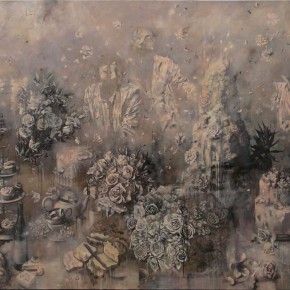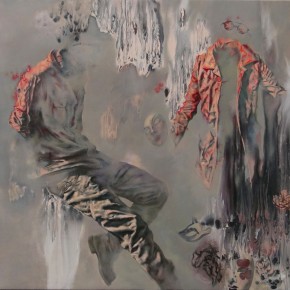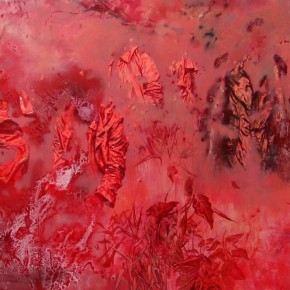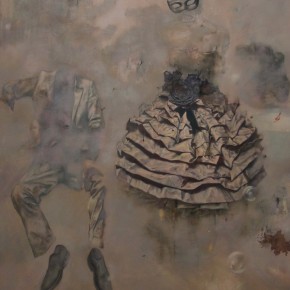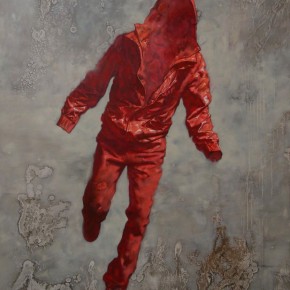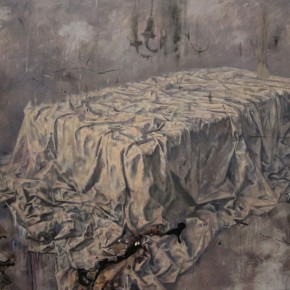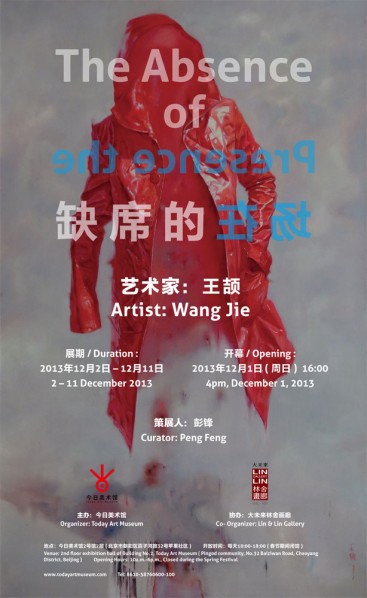
Through the means of painting, Wang Jie creates images without flesh: hollow images. These images are not an innovation seen from the perspective of art history, but his screens are in stark contrast with classical painting prominently highlighting the features of the physical body. When we focus on the implication of the flesh instead of substance, we would be surprised to find that a person’s image doesn’t disappear, it has a strong presence in the form of absence.
Jean-Pau Sartre said in his well-known essay “Being and Nothingness”, when we intently look for somebody, finding nothing where he is expected to be, he exists in the form of nothingness. Wang Jie’s paintings reveal a new form of existence, which are full of contradictions and absurdity, and it is such a contradiction and absurdity that allows us to deeply reflect on our existence.
A man’s existence is related to himself, associated with one another. We are shaped by each other, while we are also involved in shaping others. However, rather than mutually shaping, Wang Jie values mutually tearing. Making use of an almost bloody system he explains the struggle between the presence and absence. It eventually showcases a struggle without any solution, as well as a battlefield that is left by the fight to clean. Thus, the absence of specific characters on the screens, actually spread a wider scene in the mind of the spectator: or exciting, or magnificent, or a mess, or as static as quiet water… Wang Jie leaves a “field”, explaining “the presence” is eternally “elapsing”.
Peng Feng, the curator
About the exhibition
Duration: December 2 – December 11, 2013
Venue: the 2nd floor of the building 2, Today Art Museum
Opening time: at 16:00 pm on December 1, 2013
Organizer: Today Art Museum
Co-Organizer: Lin & Lin Gallery
Courtesy of the artist and Today Art Museum, tranlsated by Chen Peihua and edited by Sue/CAFA ART INFO.


